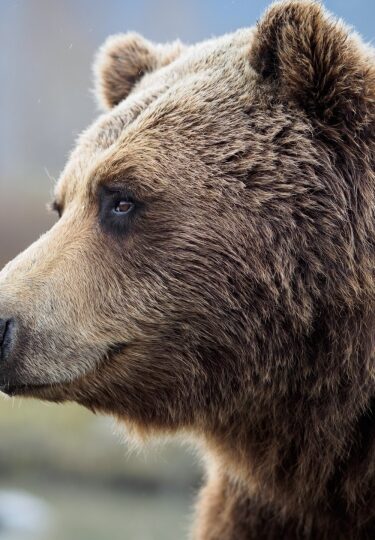Alaska is a dream destination for most, but it’s a paradise for photographers, with dramatic and diverse landscapes and abundant wildlife. Soaring mountain ranges, summer’s midnight sun, vast landscapes, waterfalls, glaciers, and photogenic wildlife such as moose and eagles are just some of the 49th State’s amazing photography opportunities.
As thrilling as photographing Alaska is, it comes with its own set of challenges. From weather that can change on a dime and tricky lighting situations to best practices for wildlife encounters and capturing the motion of water, it’s best to be prepared.
A novice will find that Alaska is a great destination to practice their new skills while those who have already honed their craft will always unearth something exciting to capture with the state’s naturally striking backdrop.
Here are 11 expert tips for photographing Alaska’s stunning landscapes and wildlife.
Do Your Research
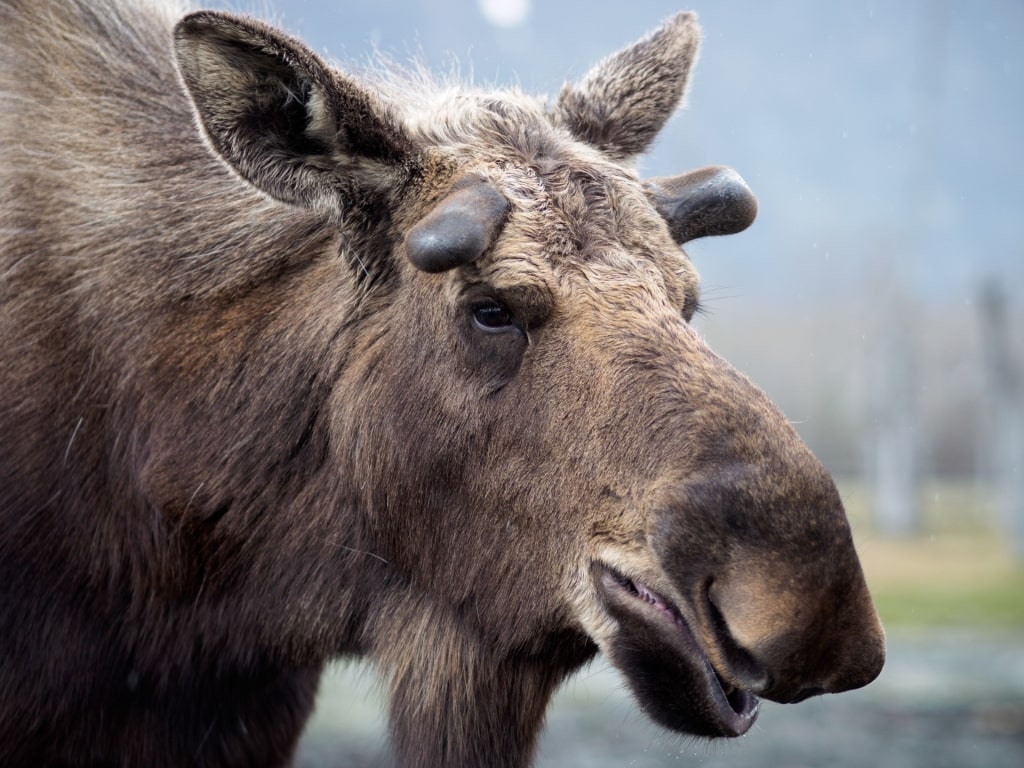
Moose
Research is at the core of any photography mission, regardless of whether you’re a beginner, enthusiast, or expert. From weather conditions to particulars about the wildlife species you wish to photograph, equipping yourself with knowledge of the terrain and potential subjects is the first step to achieving success when photographing Alaska.
For instance, if you’re hoping to take photos of the elusive moose throughout Alaska, it’s key to know the time of day that they usually appear, as well as where they tend to frequent.
Moose love hanging around in marshy wetlands and can be spotted more easily around dawn and dusk. That being said, moose have been known to make an appearance almost anytime of day in Alaska, so keep an eye out, and your camera ready.
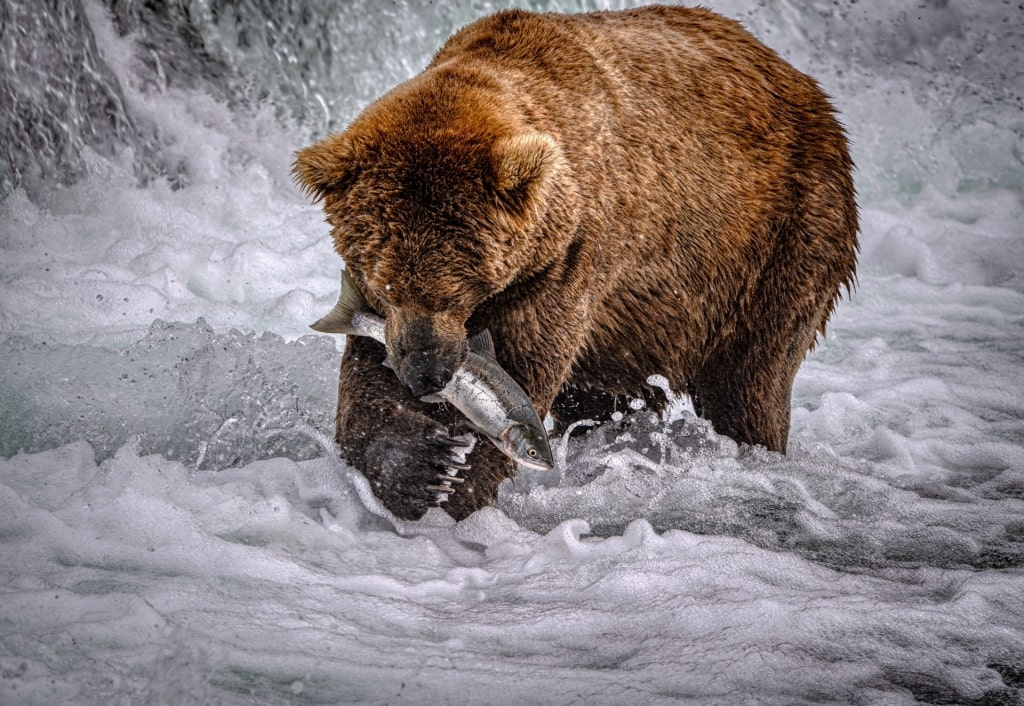
Bear
Bear-spotting time is July, especially around Ketchikan and Sitka, where bears come to feast on spawning salmon. Keep your distance, though, and if a trail is marked closed because of bear activity, follow the rules.
Make sure to research animal behavior as well for the species you might encounter; it’s important to be prepared with the knowledge of what to do should you find yourself in a dangerous situation.
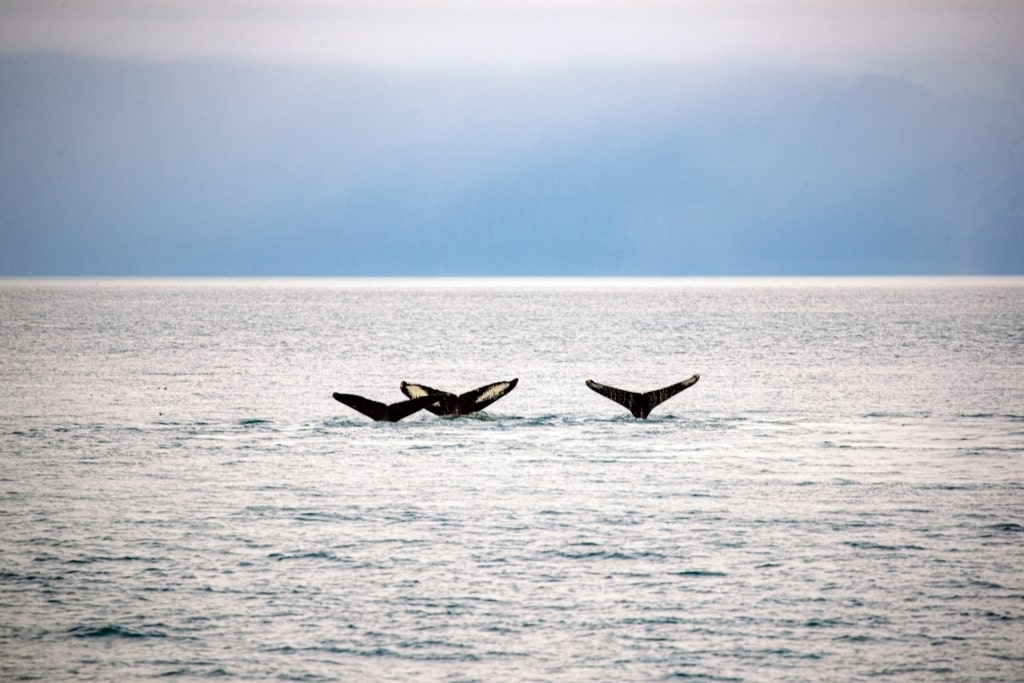
Whale
When visiting coastal regions of Alaska such as Seward and Homer on the Kenai Peninsula, or Juneau and Sitka in the southeastern region of the state, photographers will have the chance to capture a variety of marine mammals.
Since this is a seasonal occurrence for some whale species, it’s crucial to research the best time to visit Alaska for wildlife viewing to place yourself in the right place at the right time.
Although gray whales start to appear in April, peak whale watching in Alaska is usually May through September, when orcas and humpback whales join the party.
Humpbacks are the most prolific whales in Alaska, and you should certainly spot some in the Inside Passage. You should also see dolphins all over Alaska’s waters.
Bring a Variety of Lenses
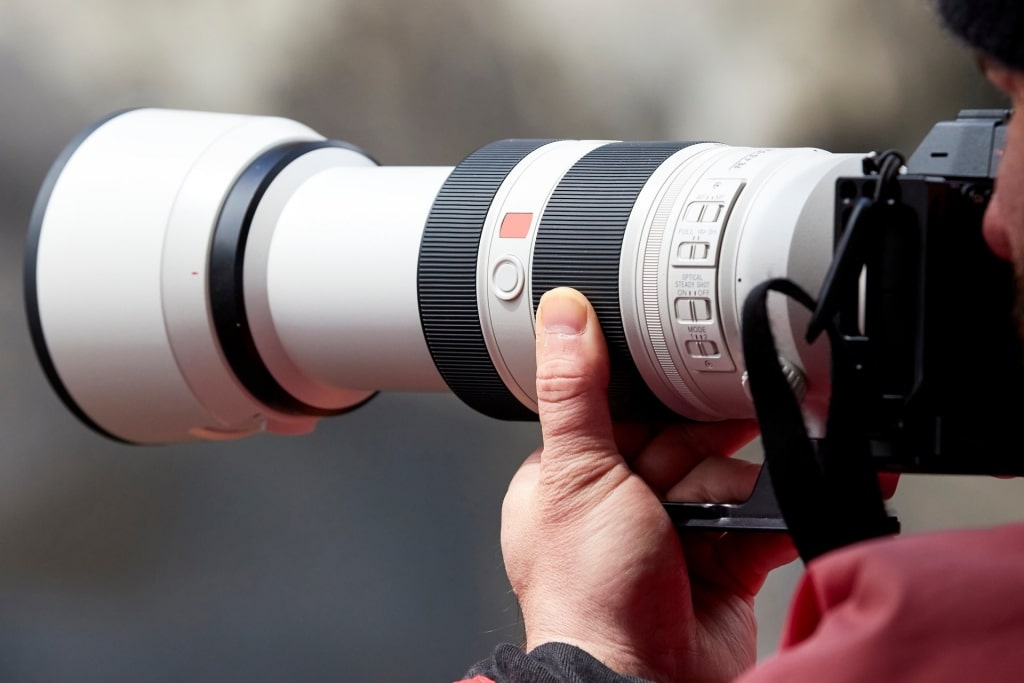
Pack your camera bag with a variety of lenses to give yourself the tools for capturing the images you desire.
A telephoto lens will get you closer to wildlife, while keeping a safe distance. Get those tight shots with a 70-200mm lens, or an even closer vantage point for fine details with a lens that shoots up to 400 or 600mm. Usually, 400mm will be enough.
Using a longer lens means you’ll be experiencing more shake with your shooting, which could make your images blurry. To help with this, try using a tripod, and/or adjust your shutter speed to compensate.
The general rule of thumb is to set the shutter for equal or faster than the lens length you are photographing with; for a 400mm shot, set your shutter to 1/400th sec, or more.
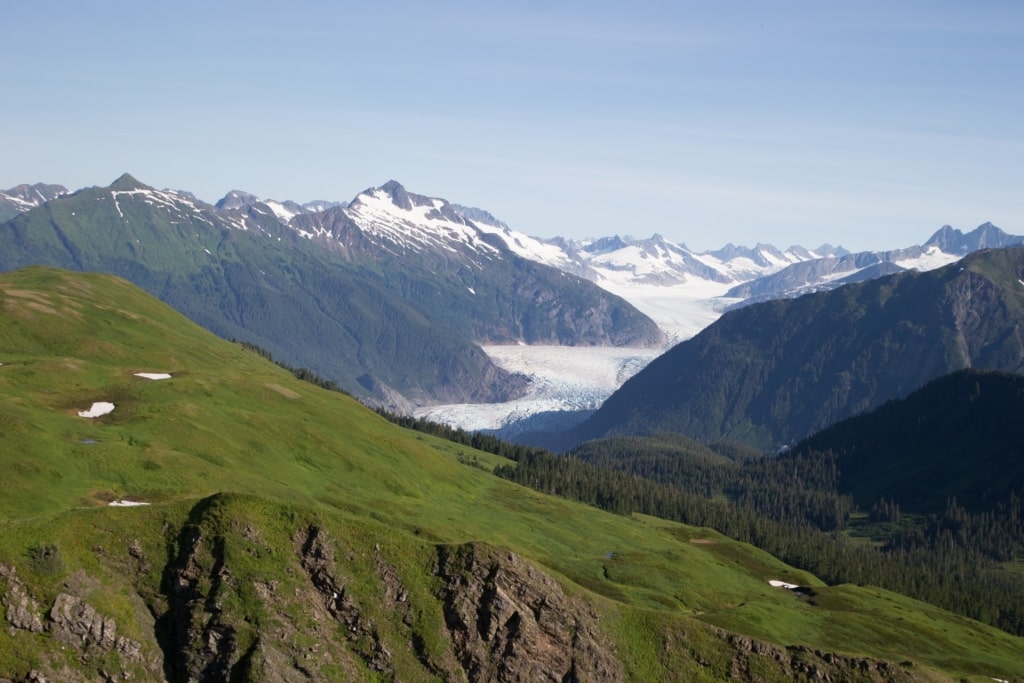
Mendenhall Glacier
To capture the entire beauty of a scene, use a wide angle lens (12-24mm). This will allow you to include things that would normally be left out of the frame, adding to the whole picture.
Additionally, if you are shooting somewhere where you aren’t able to back up any further, you’ll still be able to get the image with all the components in there. The wide angle lens is an ideal tool for landscape photographers.
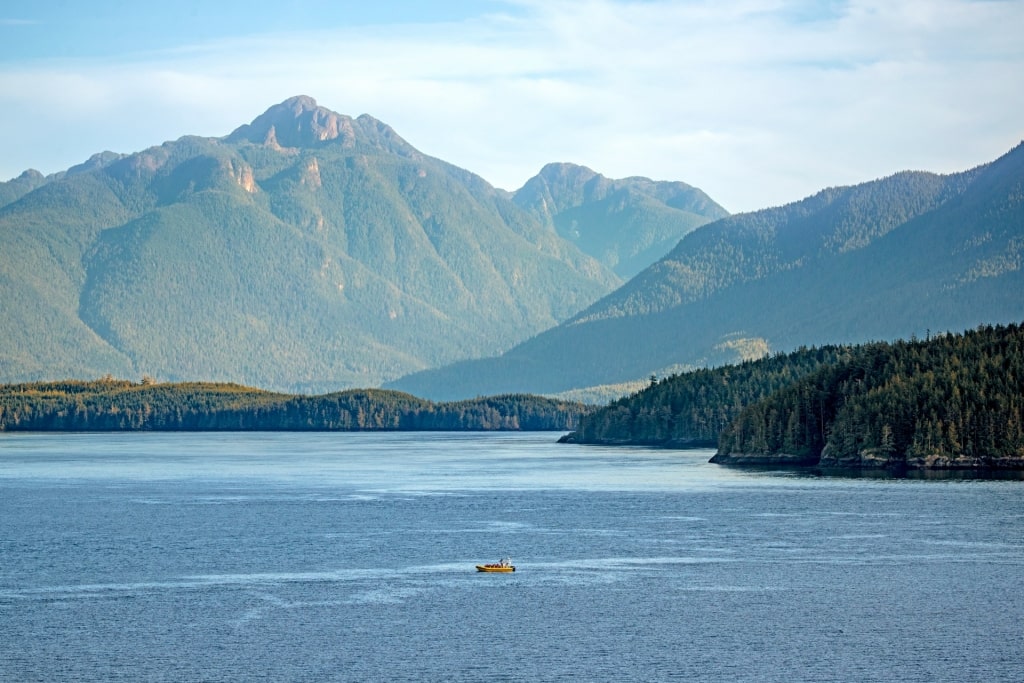
Alaska
One of the best-loved lens ranges is 24-70mm, a fantastic all-around lens that allows for some zoom, as well as a bit wider shot, and is great for most situations. If you have to choose just one lens for the day while exploring Alaska, this would be the one.
However, it’s best to have a selection of telephoto, wide angle, and mid-range lens lengths at your fingertips in order to snap the magic of Alaska at any given moment.
Layer Up
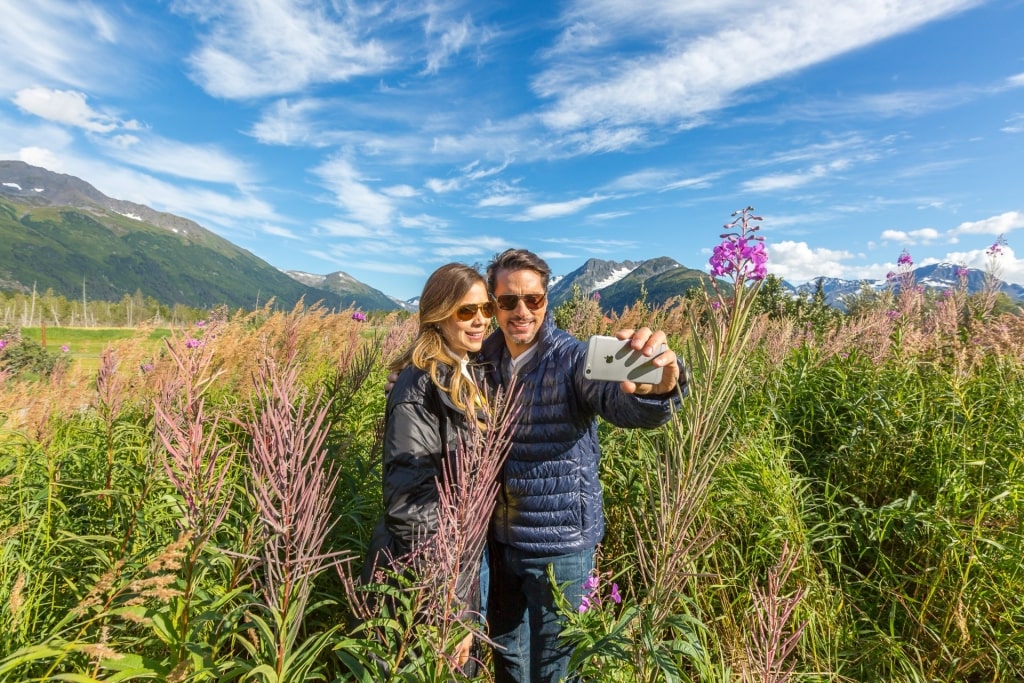
Alaska Wildlife Conservation Center
This photography tip has nothing to do with your camera, and everything to do with your clothing. What you wear can affect your photography, especially in Alaska.
Layer up with pieces that you can peel off and add on as needed. The weather conditions can change quickly and often include wind, rain, snow in higher elevations, and sun—sometimes, that’s all in one day.
Your morning endeavor might start out chilly but by the afternoon you could be too hot as you get into different positions in an attempt to capture fresh perspectives with your camera. Comfort is key when shooting the outdoors, and Alaska is a prime example of this.
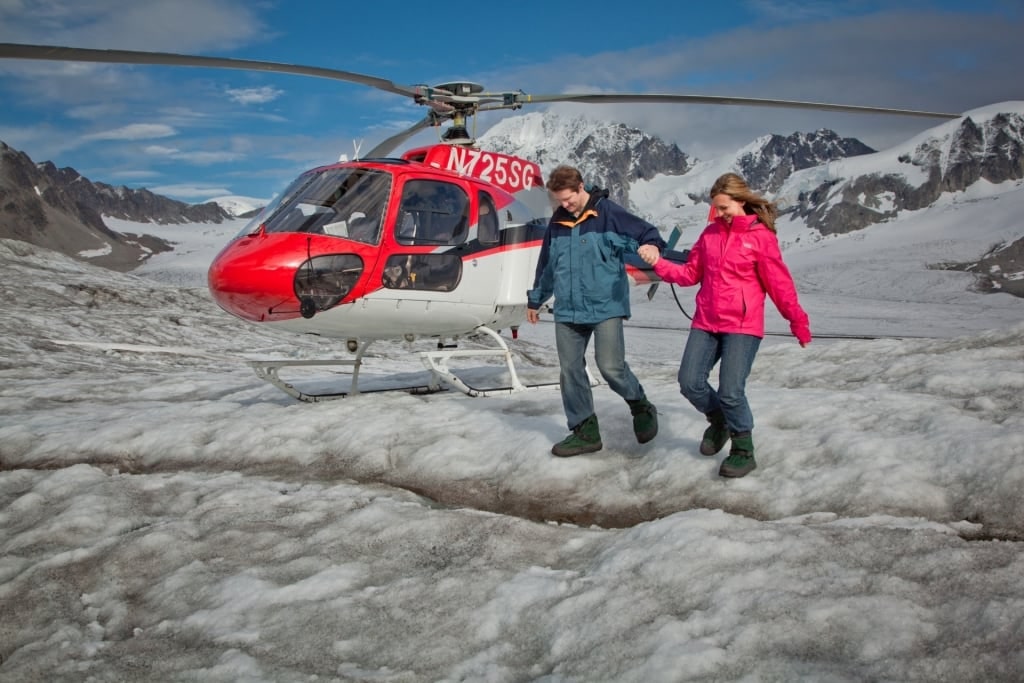
Glacier in Alaska
If you aren’t comfortable, it’ll likely show in your photography, or your patience will wear thin earlier than normal. A rain or windproof jacket, warm mid-layer, hat, and proper hiking shoes with grip should all be in your wardrobe line-up.
Read: What to Pack for an Alaska Cruise
Keep a Safe Distance
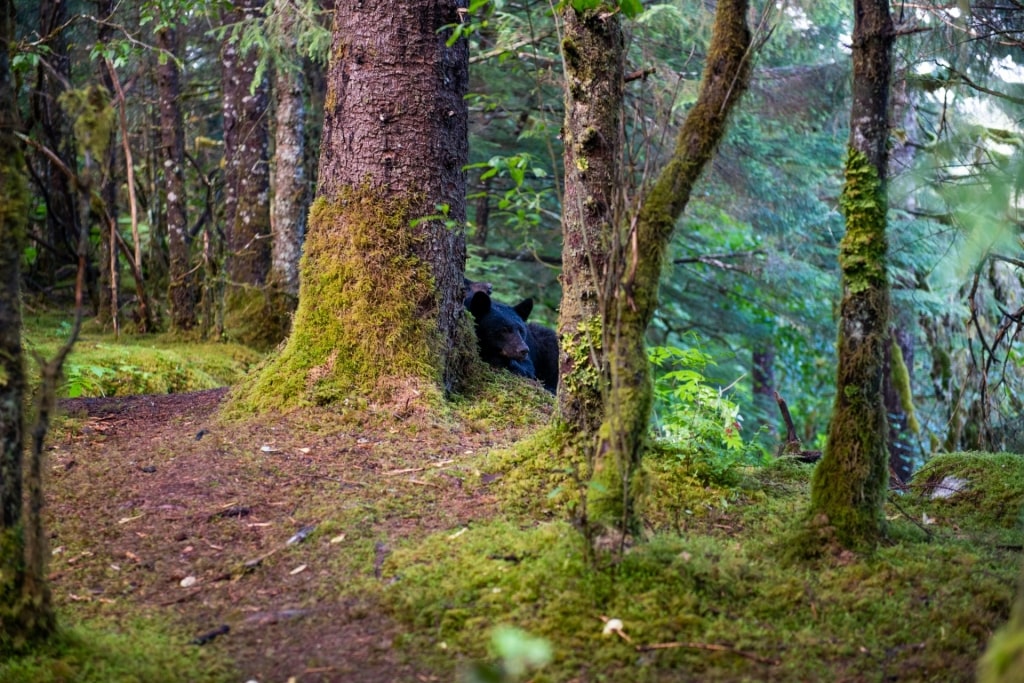
Tongass National Forest
Respecting wildlife and keeping yourself safe is the most important aspect of wildlife photography.
Since we are in their home, it’s crucial to keep a safe distance and avoid disturbing any creature’s activities. They are wild animals and can have unpredictable behavior.
That means do not yell at them, throw anything to get their attention, and certainly do not feed them. Following these general rules will not only help to keep you out of harm’s way, but will also prevent stress to the wildlife and allow you to capture images true to their natural behaviors.
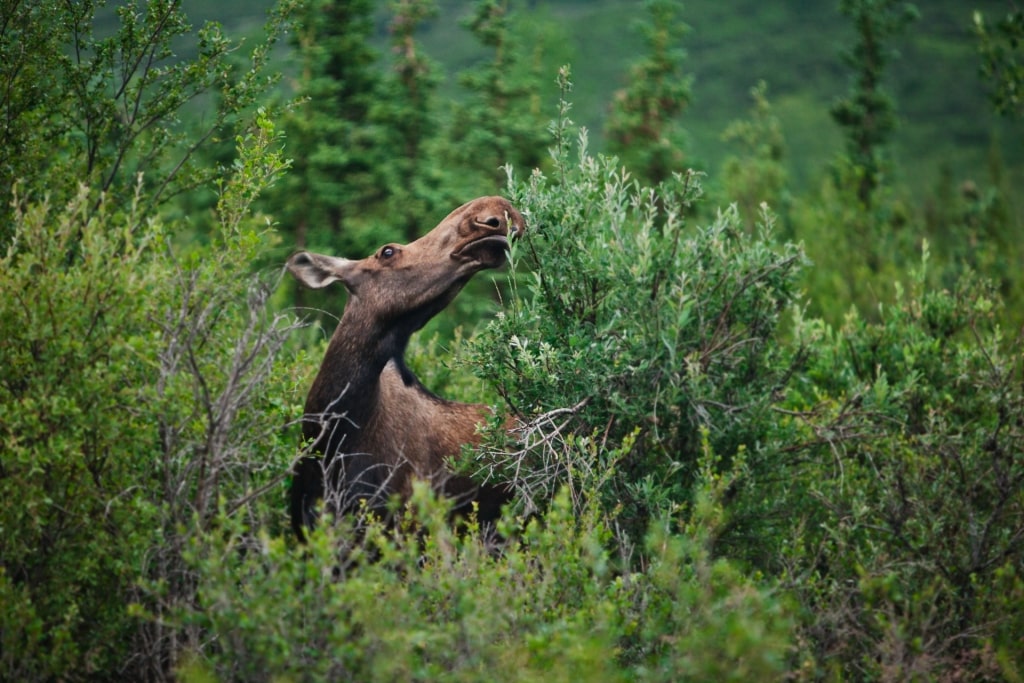
Moose
Avoid making eye contact and do your best to blend in with your surroundings. While you’re shooting, be aware of the animal and note any signs of aggravation or distress. This can be anything from raised hair on their neck to lowered ears.
Researching the species’ aggressive behavior and mannerisms before your trip is a great way to prepare yourself for photographing wildlife. For instance, a moose will show its distress by putting its ears back, raising the hair on the back of its neck, or throwing its head upwards.
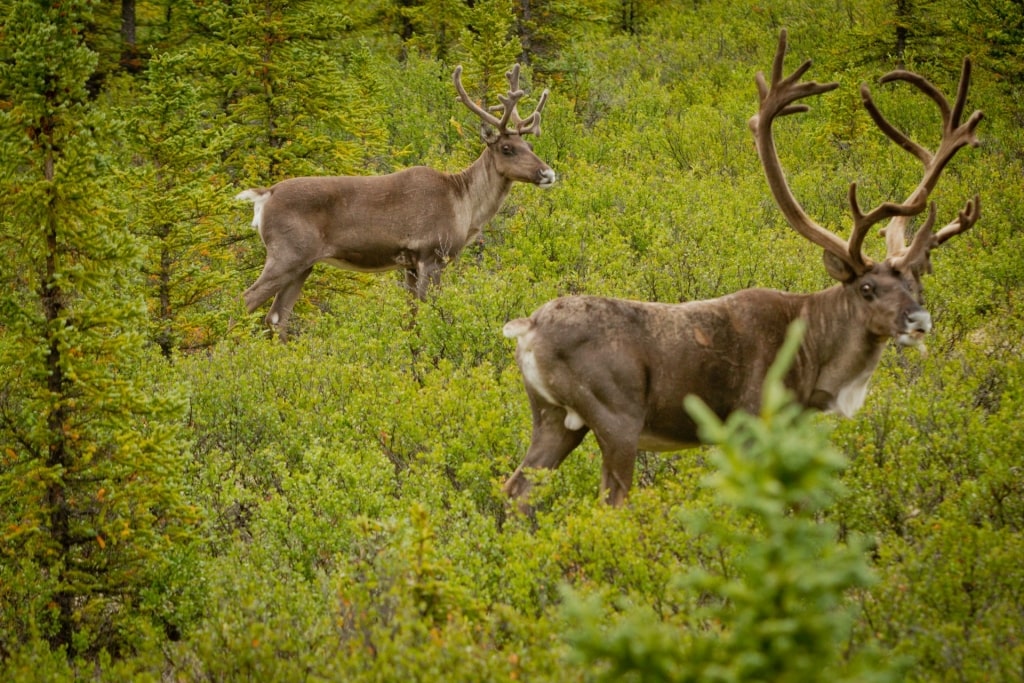
Caribou
Additionally, if you do stop on the side of the road, it should always be in a designated pull-off area to keep you and other drivers safe. One of the best national parks in Alaska, Denali National Park is a great place to maximize your opportunity to photograph the “Big Five,” moose, grizzly bears, Dall sheep, wolves, and caribou.
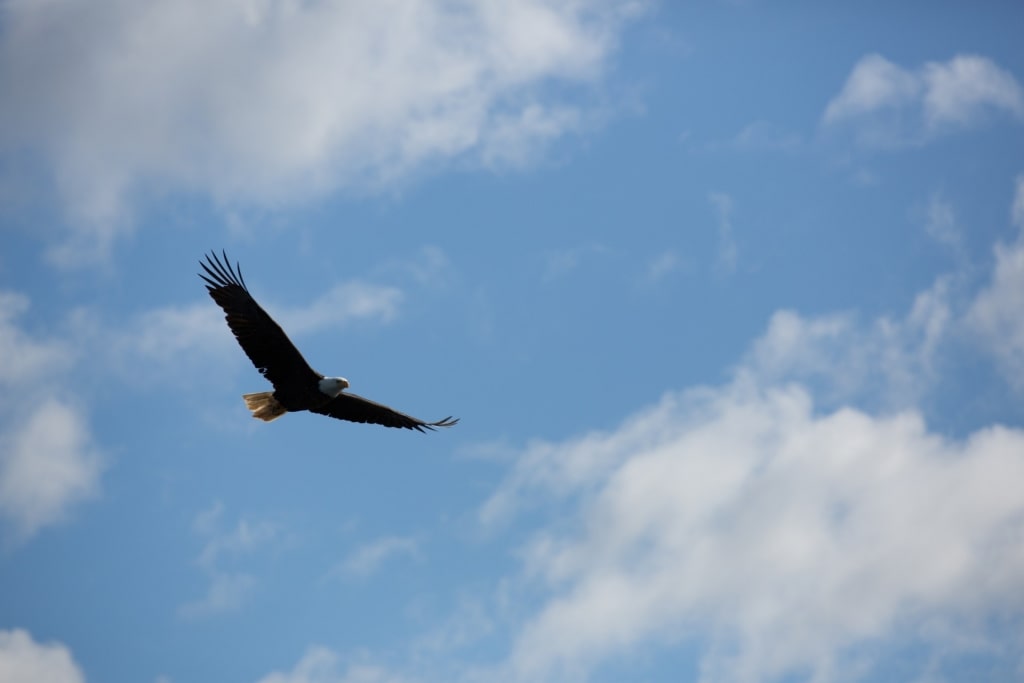
Bald eagle
If you’d like to photograph wildlife with guaranteed sightings and safe conditions, consider visiting Alaska Raptor Center in Sitka, where you can capture a tight shot of an eagle, or their other resident birds such as owls and hawks, there for rehabilitation. This is a particularly popular option for families.
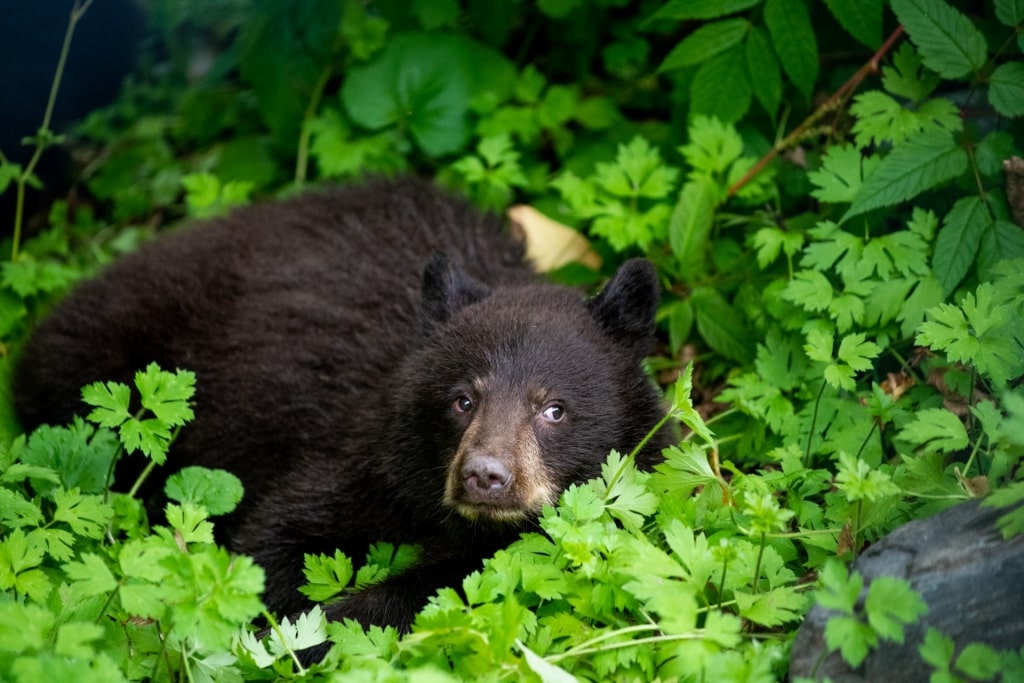
Bear
Another one of the best things to do in Sitka is to visit The Fortress of the Bear, where you can view and photograph bears in a naturalized setting within the Tongass National Forest.
You can enjoy being close to the bears while staying safe, getting within 25 feet of them for excellent photo opportunities.
Shoot During Golden Hours
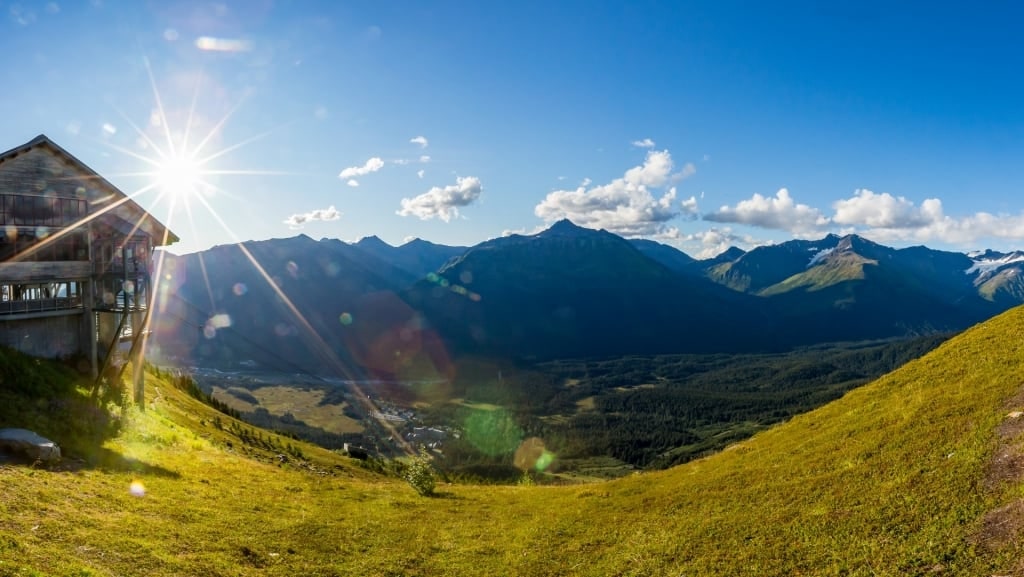
Alyeska
Everywhere you go in Alaska, you’ll find unbridled beauty to capture. Sunrise and sunset amp this up to a whole new level and are some of the best times to shoot the landscape and wildlife that Alaska is known for.
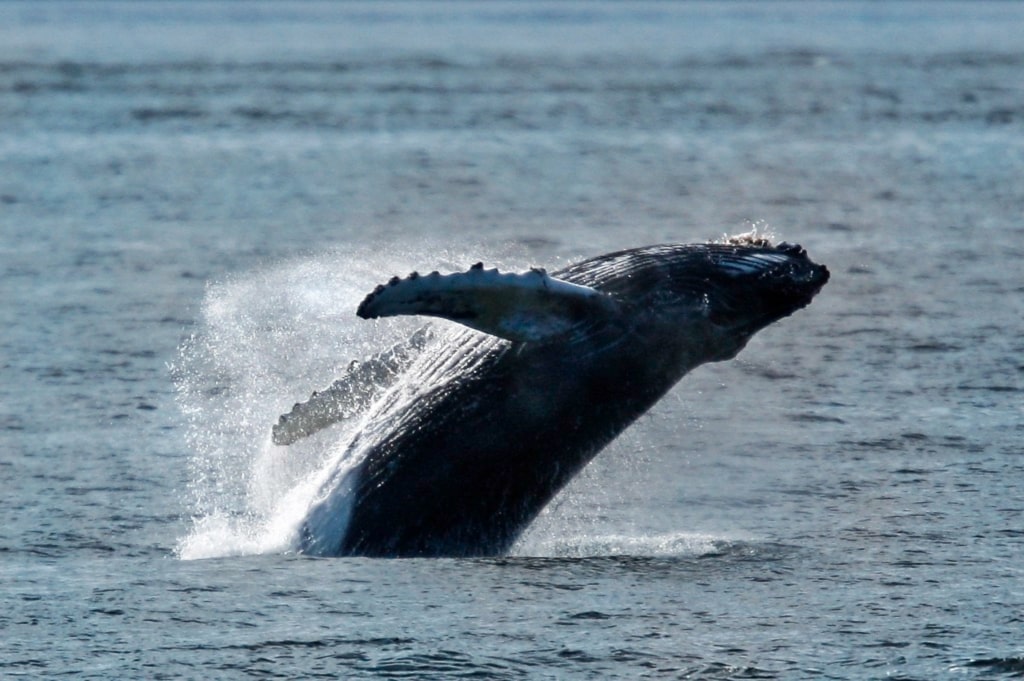
Humpback whale
Waking up early will prove well worth it when you feast your eyes on shades of pink, orange, and yellow, early morning sea mist, and enjoy a better chance for spotting wildlife among Alaska’s breathtaking terrain.
Relish in the chance to capture humpback and gray whales breaching at dawn, with golden ripples in the ocean; this is when they are most active.
Staying up for the midnight sun’s evening show, with stunning alpenglow illuminating mountaintops and glacial edges, signifying the day’s end, will be a visual treat as well. To emphasize the colors, try underexposing your shot a touch.
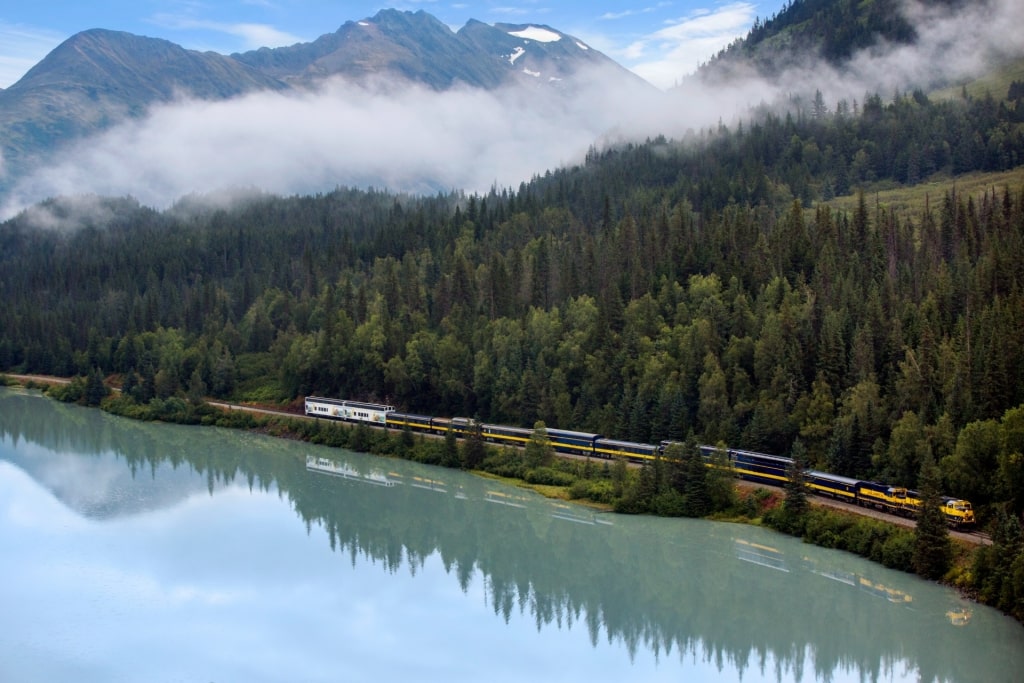
Alaska
Water has greater potential to be calm in those early morning or late evening hours as well, boosting your opportunities to capture gorgeous reflections of the Alaskan mountains and surrounding scenery.
The softer light and amazing colors can enhance any photo, making golden hour shooting one of the top tips for photographing Alaska.
Look Beyond the Wildlife
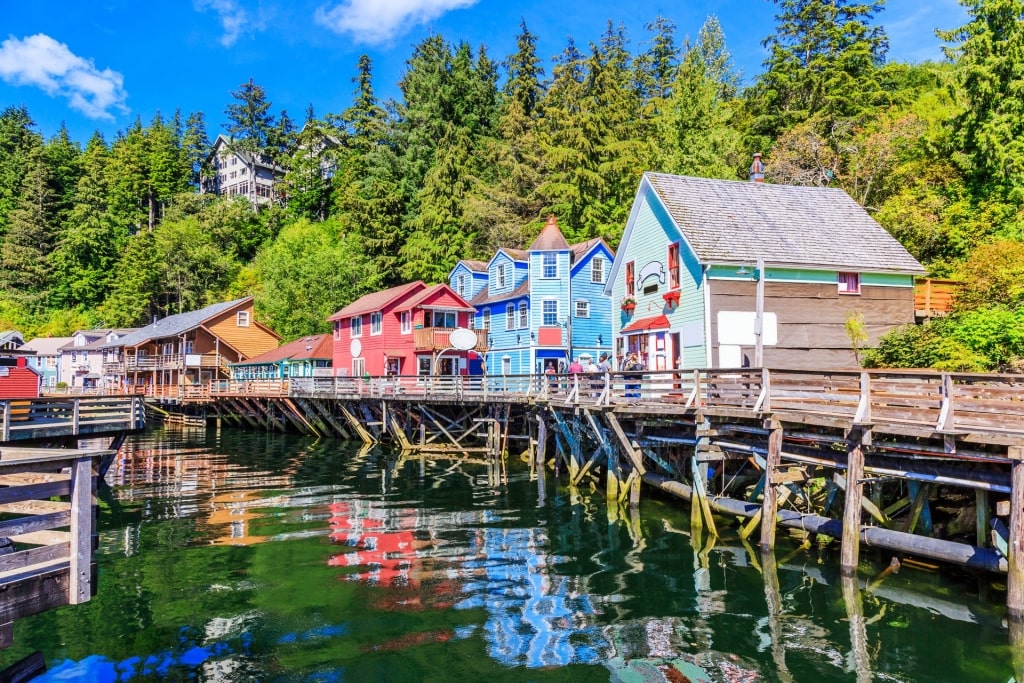
Creek Street, Ketchikan
Alaska has a rich history and culture and you can tell a wonderful photographic story by documenting the state’s human side. Capture photos of some of the most beautiful places in Alaska, such as Ketchikan’s colorful Creek Street, or the artistry of the ancient native totem poles.
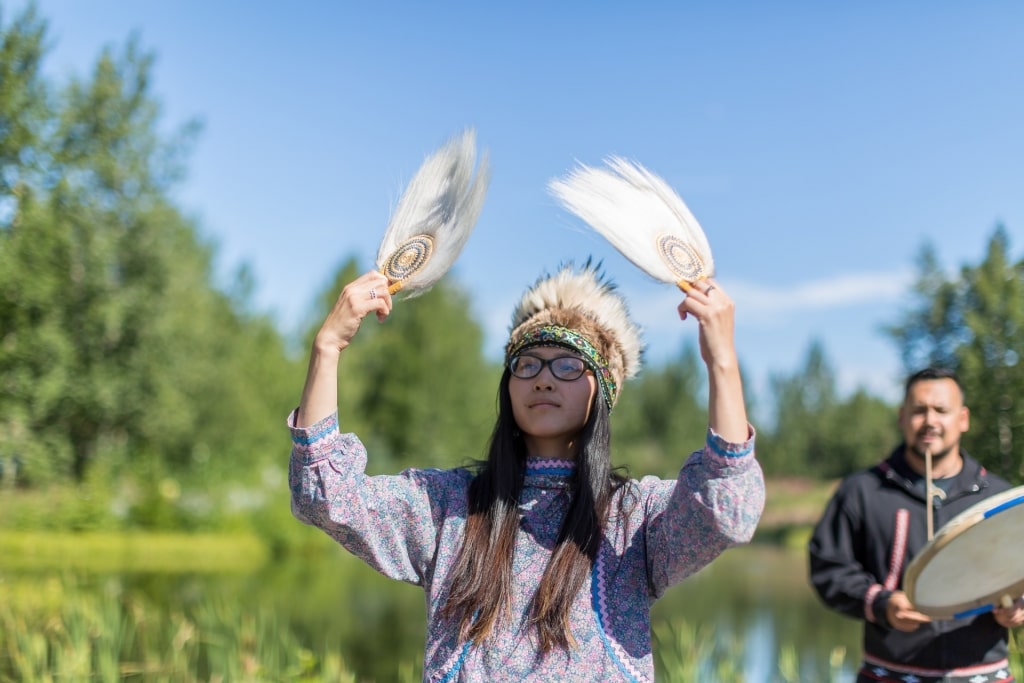
Alaska Native Heritage Center
Delve into Alaskan culture and snap portraits of local people, with their permission, in context—for example, fishing, working with animals in rehabilitation centers, mushing sled dogs, or creating handicrafts.
Ride the White Pass & Yukon Route Railway from the southeastern city of Skagway, and photograph dramatic scenery such as Bridal Veil Falls and Dead Horse Gulch that played such an important part in the Gold Rush. Explore the architecture of Russian-influenced Sitka, or the famous murals in Seward.
Read: Best Towns to Visit in Alaska
Use a Polarizing Filter
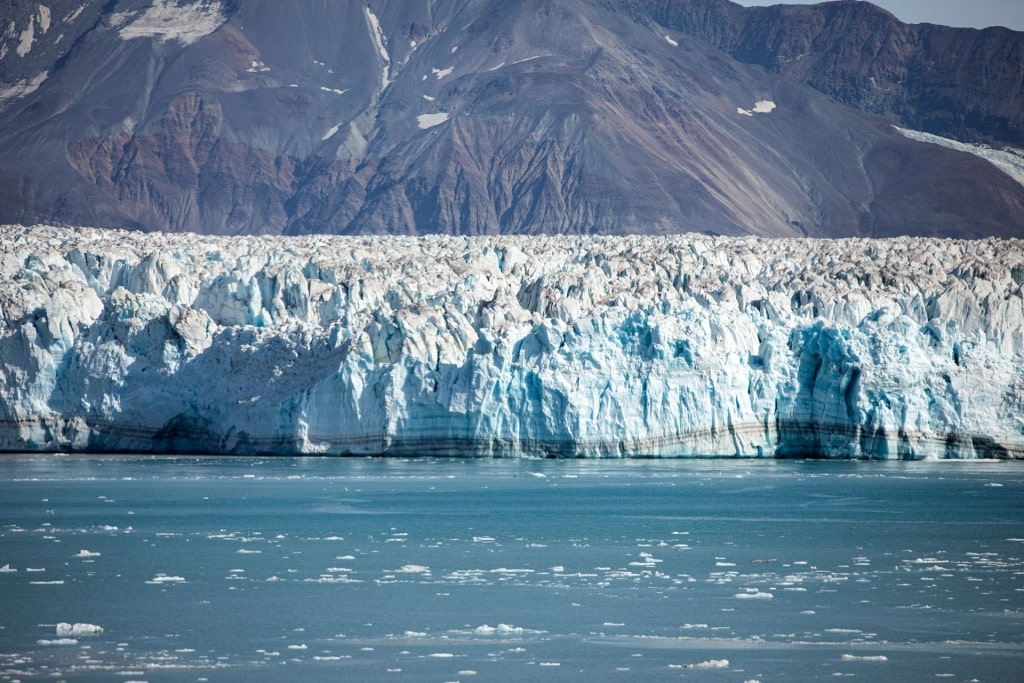
Hubbard Glacier
Lighting in Alaska can be difficult to work with sometimes. From snow-capped mountains to bodies of water and blue-white Alaskan glaciers, the landscape acts as a natural reflector in certain situations.
The stark white of snow that confuses your camera’s automatic exposure settings can be dealt with by overexposing your shot a bit, keeping the gray tones out of the snow.
A polarizing filter is another tool that will aid in shooting reflective water such as the ocean and rivers, and the glare that comes with it. A polarizer can also deal with a sky that is too bright, by darkening it and adding vibrance to colors in rainbows and surrounding scenery.
Read: Magnificent Lakes in Alaska
Focus on the Eyes
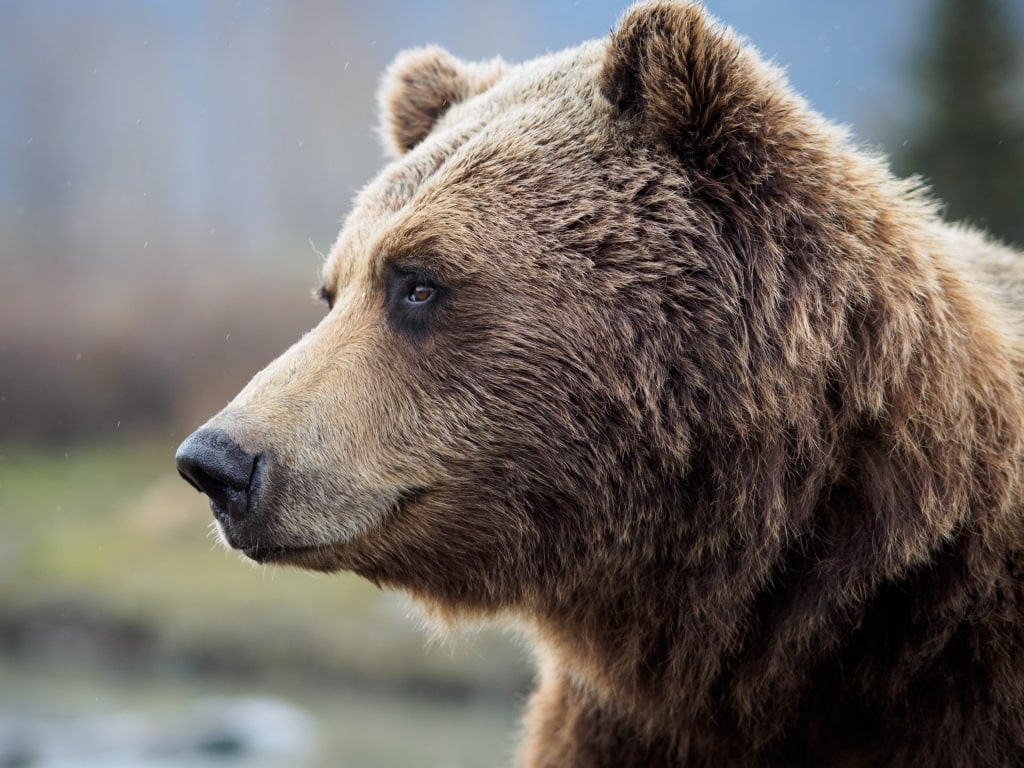
Bear
Perhaps the most important technical tip for photographing wildlife is to focus on the animal’s eyes. This will produce sharp images of the creature, and create an emotional connection to the viewer.
Using continuous autofocus when shooting Alaskan wildlife is another key tool, particularly for animals that move erratically.
Autofocus in combination with “burst mode” is a must-do as well, allowing your camera to take several images in the span of seconds while keeping the focus on the eyes and face, a priority.
Use Slow Shutter Speed For Waterfalls
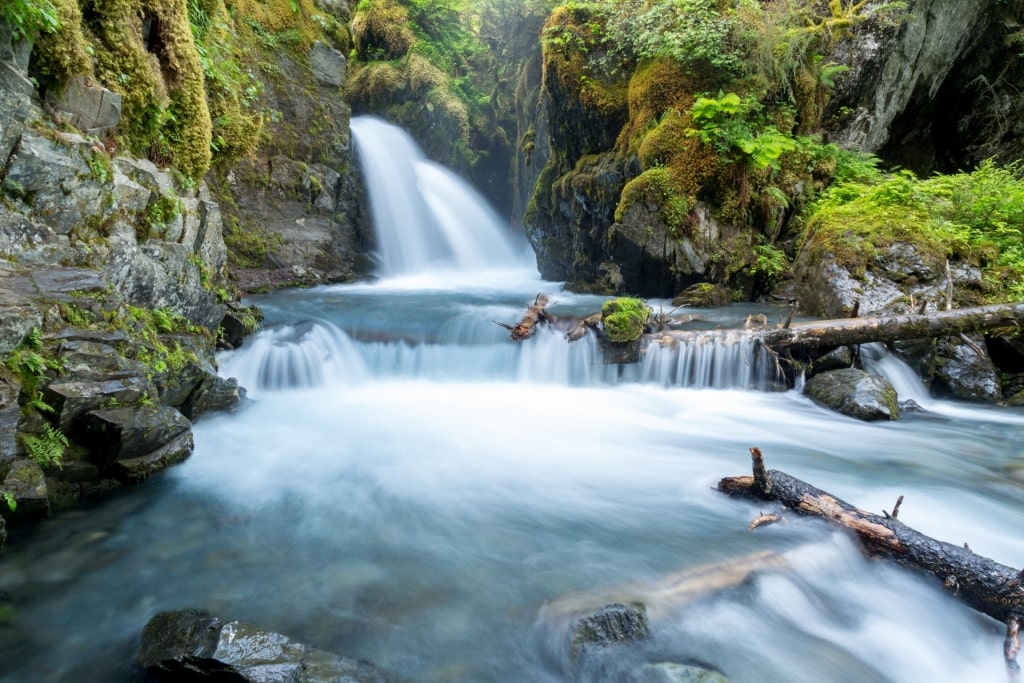
Virgin Creek Falls, Anchorage
Alaska has many beautiful waterfalls amid its awe-inspiring landscape. Whether you’re photographing the gorgeous Nugget Falls in Juneau, or Anchorage’s Virgin Creek Falls, using the correct settings will help you achieve that otherworldly and dreamy look in your images of these natural wonders.
A slow shutter speed is a crucial setting. Start at 1-2 seconds and balance the ISO and aperture settings to match (small aperture, f/11 or higher, and low ISO). Since you will be using the slower shutter speed, you will also need to keep your camera completely still while shooting. A tripod is recommended to do this.
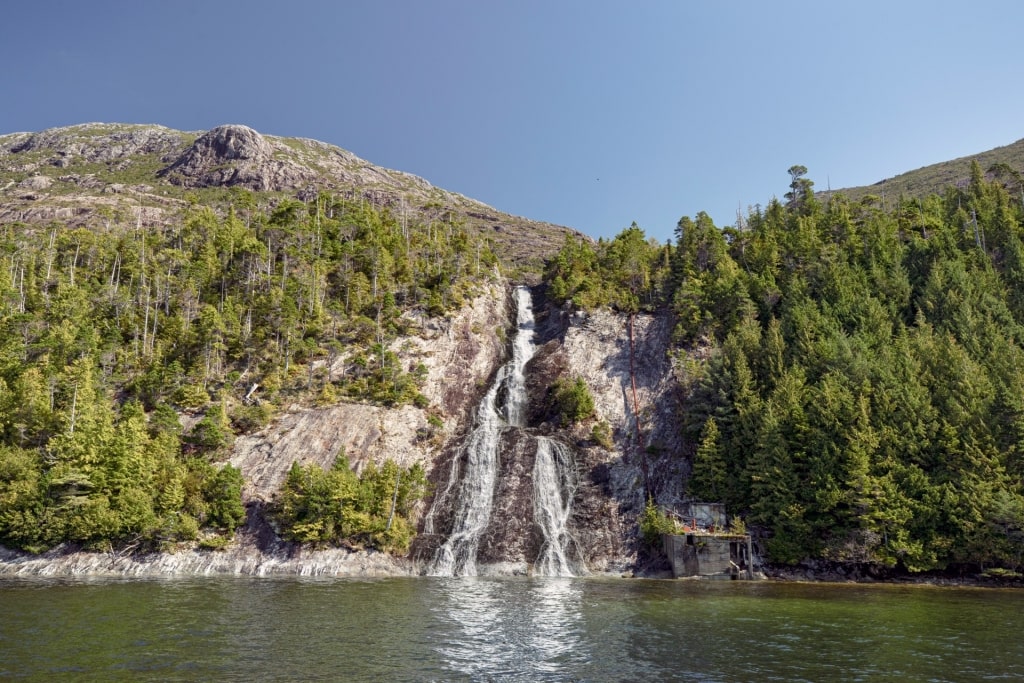
Alaska
Remember that each waterfall and set of conditions that you’ll be capturing it in are different, so you’ll have to adjust settings accordingly. When photographing moving wildlife such as Alaska’s whales, you’ll have to act quickly.
Although the shutter speed and your other camera’s settings will vary due to the specific conditions that day, using 1/500 or faster as the shutter speed is a great starting point to freeze the action in your image.
Go on a Hike
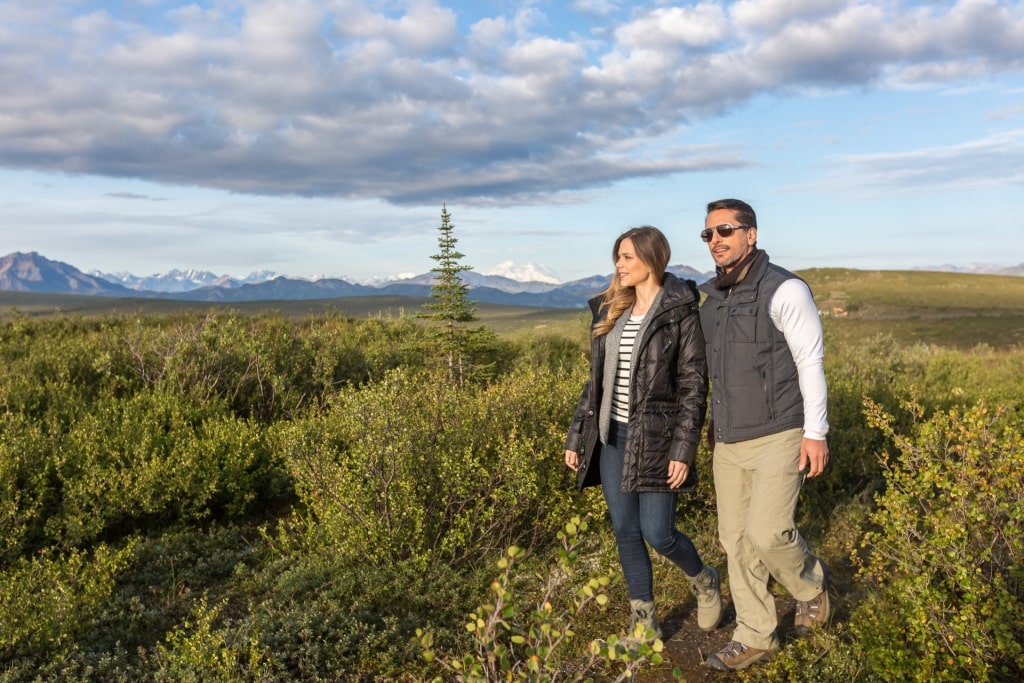
Denali National Park
If it’s your first trip to Alaska, make sure to take advantage of the beautiful hiking trails with your camera in hand and you’ll find endless subjects and scenes to photograph.
Hiking in Alaska will not only bring you to new places and heights, but it will allow you to absorb your surroundings and grant you access to spots that not everyone gets to photograph.
For the ultimate Alaskan adventure, try the Mount Roberts trail near Juneau or Denali National Park’s Savage Alpine loop trail where you may spot wildlife among stunning landscapes.
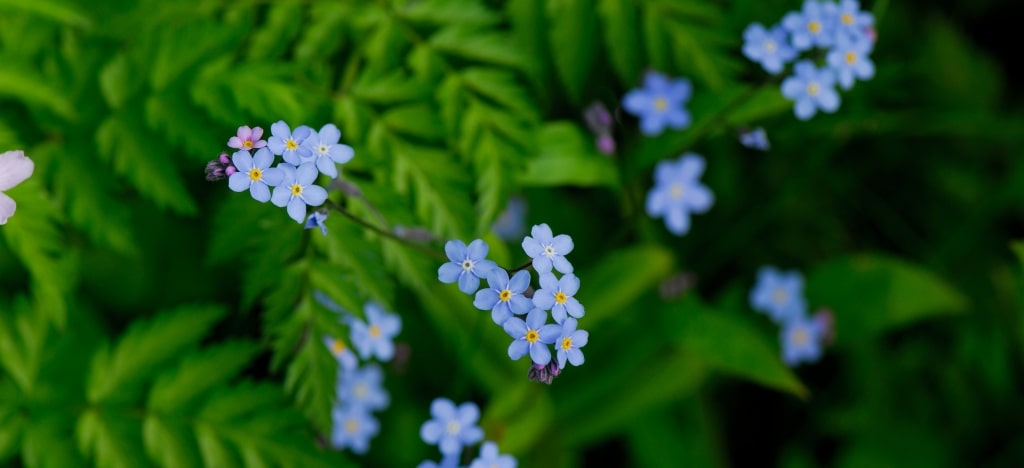
Forget-me-nots
Focus on tiny details, too; hike in spring and you’ll find flower-strewn mountain meadows for close-ups of brilliant blue forget-me-nots (Alaska’s state flower), or during summer in Alaska, brilliant purple fireweed, a tasty snack for deer, moose, and caribou.
Fall in Alaska is berry season, when you can capture ruby-colored berries to add a splash of color to your landscape shots.
Bring Proper Accessories
In addition to your camera and lenses, accessories will aid you in making the most of your photo adventure. A camera bag with a waterproof cover will keep your gear protected from the elements and cushioned while exploring.
Having a backup battery and SD card are also a good idea, as you don’t want to run out of storage while in the field.
A lens wipe is also a good idea, particularly in Alaska. Having a lens-safe cloth or wipe to clean water droplets or dust off your lens will prove to be very handy in the state’s fickle climate.
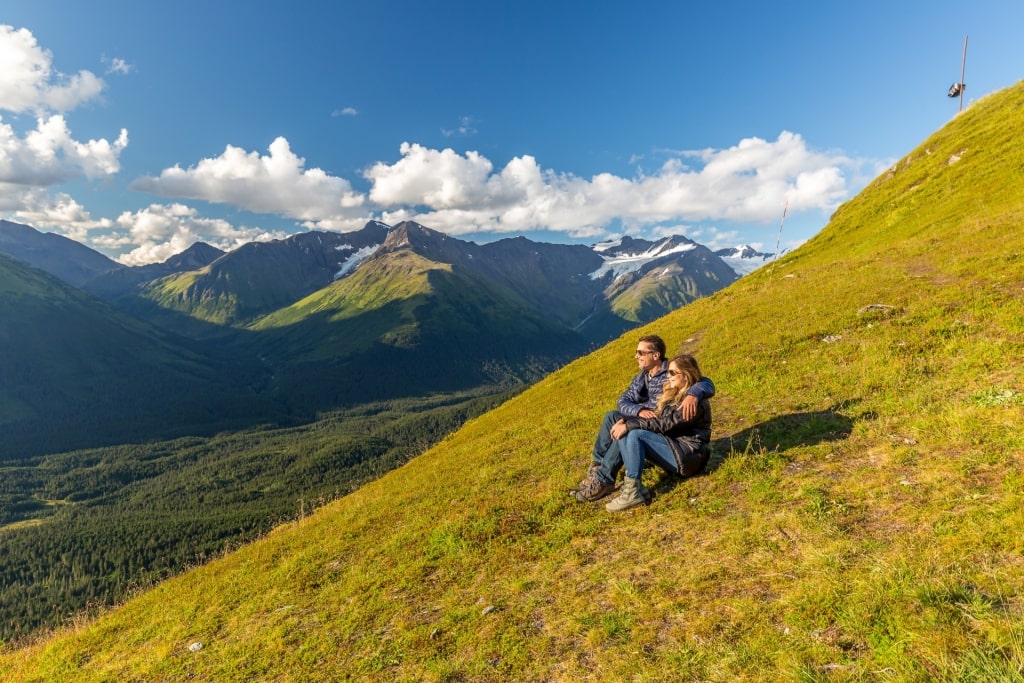
Alyeska
A cruise is a fantastic way to explore the vast wilderness and utter beauty you’ll discover while photographing Alaska.
From the state’s rich wildlife to its amazing and diverse landscapes, Alaska is a photographer’s dream destination. Browse our Alaskan cruises and book your photography expedition today.
